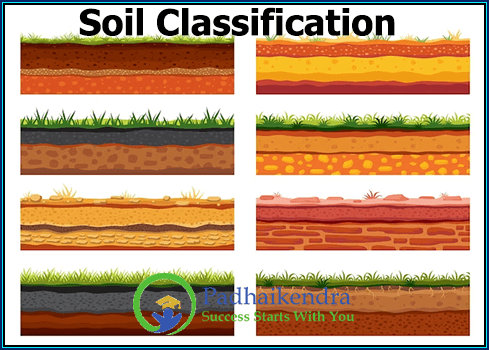Zonal soils and Azonal soils are two types of soils based on their relationship to the environment and the factors responsible for their formation.
Zonal soils are soils that are formed under the influence of the environment and the specific factors that exist in a particular region. They are characteristic of a particular zone or region and are related to the climate, vegetation, and topography of the area. These soils tend to be well-developed and have distinct soil horizons.
The following are some of the types of zonal soils:
- Alfisols: These soils are typically found in temperate to subtropical regions and are characterized by a moderately thick layer of organic matter at the soil surface, along with a clay-rich subsurface layer.
- Andisols: These are soils that have developed from volcanic ash and are found in areas with active or recent volcanic activity. They are often rich in nutrients and have a high water-holding capacity.
- Aridisols: These soils are typically found in dry, desert regions and are characterized by a lack of organic matter and a high concentration of soluble minerals.
- Histosols: These are soils that have a high concentration of organic matter and are typically found in wetland areas such as swamps and bogs.
- Inceptisols: These are soils that are in the early stages of development and typically have a shallow, poorly developed soil profile.
- Mollisols: These soils are found in grassland regions and are characterized by a thick layer of organic matter at the soil surface and a high concentration of nutrients.
- Oxisols: These are highly weathered soils that are typically found in tropical regions with high rainfall. They are characterized by a low nutrient content and a high concentration of aluminum and iron oxides.
- Spodosols: These are acidic soils that are typically found in coniferous forest regions. They have a high concentration of aluminum and iron oxides in the soil profile and are often characterized by a sandy texture.
- Ultisols: These soils are typically found in subtropical to tropical regions and are characterized by a low nutrient content and a high concentration of clay in the soil profile.
These are some of the common types of zonal soils found in different regions of the world.
Azonal soils, on the other hand, are soils that are not strongly influenced by the environmental factors of a particular region. They are often found in areas where soil formation processes have been disrupted or where soils are developing on relatively young geologic materials. Azonal soils tend to have less distinct soil horizons and may be shallow or poorly developed. Examples of azonal soils include soils that have developed on recent volcanic ash or soils that have developed on steep slopes where erosion is prevalent.
It is important to note that while zonal and azonal soils are distinct categories, many soils have characteristics of both zonal and azonal soils. This is because soil formation processes are complex and influenced by multiple factors. Soil scientists use soil classification systems to better understand the properties and characteristics of different soils and how they relate to the environment.





